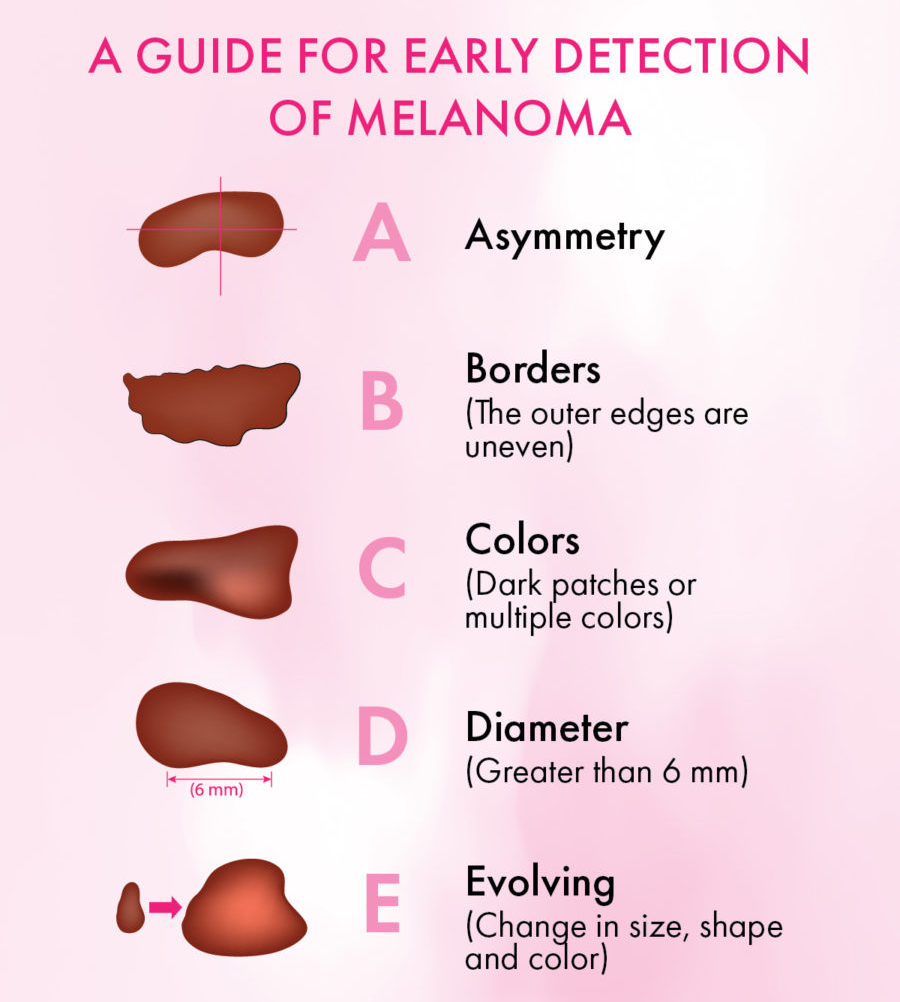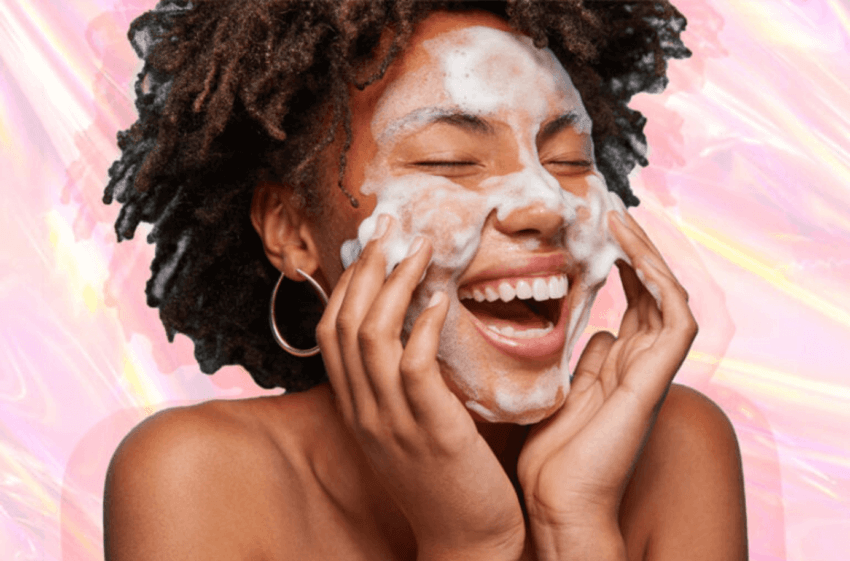Derm Treatment 101: Bacne, Chicken Skin, Razor & Body Bumps
 via Giphy
via Giphy
We’ve all been there, minding our own business, when we suddenly feel something on our body that wasn’t there before. Maybe it’s a rough-feeling texture across our arms, a singular tender bump on our upper back, or perhaps a streak of sensitive red spots on our shins. Our body is prone to developing all sorts of bumps, and it can be tricky to keep them all straight. Today we’re helping you learn how to identify things like body acne, keratosis pilaris (also known as chicken skin), razor bumps, cysts, and more. Even better, we’re offering some dermatologist pro-tips on how to treat each.
1. Body Acne
Body acne looks pretty similar to the acne that rudely shows up on your face, though it can sometimes be more severe and also more difficult to tackle. “Body acne may be pustules filled with pus, or they could be deep, painful pimples under the skin,” says Dr. Alan Parks, a board-certified dermatologist and founder of DermWarehouse.
He adds, “You’ll be able to differentiate acne on your body from other skin conditions by determining if there are different types of breakouts present at once, such as blackheads, whiteheads, and cystic bumps.” (A uniform type of bump on the skin might be caused by something else.)
How to Treat Body Acne
To treat body acne, incorporate a body wash into your shower routine that specifically targets breakouts. These are often formulated with salicylic acid or benzoyl peroxide. PanOxyl Acne Foaming Wash with 10% Benzoyl Peroxide, $14, is a dermatologist favorite. A lotion or mist can also be helpful, such as Versed Skincare Back-Up Plan Acne-Control Body Mist, $15. We’re also big fans of the AZIMD Gly/Sal Body Spray, $32, formulated by dermatologist Dr. Azadeh Shirazi with 10% glycolic acid and 2% salicylic acid.
2. Razor Burn and Bumps (Folliculitis)
Razor bumps are raised spots that are usually red and inflamed. There’s also razor burn, which looks like a rash of tiny red dots and can feel sensitive to the touch. You’ll know you’re dealing with razor burn or bumps because both occur in the area where you recently shaved.
“Razor bumps are usually due to a curved hair shaft that has been cut close to beneath the [very top layer of skin],” explains Dr. Anthony Rossi, board-certified dermatologist recognized internationally as a leading expert on sensitive skin. “This can cause [the hair] to curl back into the skin and pierce the skin again, forming an ingrown hair that gets trapped and inflamed.”
How to Treat Razor Burn and Bumps
 via Giphy
via Giphy
First thing’s first: keep the area super clean and avoid picking at the bumps or scratching your rash. Dr. Parks says that a warm saltwater solution can help soothe the pain and encourage the hair to grow back out. Exfoliation is also important before and immediately after shaving since it helps remove dead skin cells and dirt. We like Topicals High Roller Ingrown Hair Tonic, $26.
3. Keratosis Pilaris
Often known as “chicken skin,” keratosis pilaris is a harmless skin condition that presents as tiny, small bumps or roughness on your skin. The two most common areas you’ll see it include your upper arms and upper thighs. “Keratosis pilaris develops when the skin produces too much keratin, which blocks the hair follicle and causes a blockage. These bumps typically don’t hurt or itch,” explains Dr. Parks. “It’s fairly common for many people, including those with dry skin, allergies, eczema, or other conditions.”
How to Treat Keratosis Pilaris
There’s no outright “cure” for keratosis pilaris, but it can help to apply lotions formulated with exfoliating ingredients such as lactic acid, salicylic acid, retinoids, and enzymes. These ingredients help break down the keratin buildup, dead skin, and other impurities blocking hair follicles.
Some good options include First Aid Beauty KP Bump Eraser Body Scrub, $30, and CeraVe SA Body Lotion, $16. Severe cases may require help from a doctor and more intense treatments, such as prescription topicals or laser treatments. Check out the brand Ameliorate, which has everything from soothing lotions and exfoliating mitts that have been specifically designed to tackle keratosis pilaris.
Posts You'll Love:
4. Cysts
In their early stages, cysts can look very similar to acne. However, these gnarly dudes linger deeper under the surface and can become quite large and painful over time. Fortunately, they’re typically harmless. Dr. Rossi says, “Cysts are larger [than pimples] and usually filled with dead skin cells. They tend to be ‘walled off’ by a sac that continues to fill up.”
How to Treat Cysts
Cysts will often go away on their own, but some may require the assistance of your dermatologist who can help drain or surgically remove the sac. They may also prescribe antibiotics. “Don’t mess with cysts or try to drain them on your own, as it may cause a more severe infection,” Dr. Parks warns.
5. Hives
Hives are a type of rash that occurs on the surface of your skin. The rash often includes small welts, which may be the same shade as your skin tone. Dr. Parks says, “Hives appear in many circumstances, such as with an allergic reaction, anxiety, or an outside irritant.”
How to Treat Hives
 via Giphy
via Giphy
Hives typically go away on their own within a few hours. While short-lived and not likely to incur long-term damage, consider hives an indication that you should avoid the substance that caused the reaction! (This may require some investigating on your end but do your best to find the culprit.)
6. Skin Cancer
Skin cancer looks different depending on the stage and type. In some cases, it’s a small spot or an area of discoloration, while other times it’s a pearl-like bump or a red, scaly patch of skin. (Check out this informative overview from the American Academy of Dermatology.)

“I often see patients who think that they have a pimple or cyst that just won’t go away, but it actually is a skin cancer,” says Dr. Rossi. He says to see your dermatologist if there’s a bump, rash, mole, or freckle on your skin that doesn’t seem to go away, and/or has changed in appearance over time. We tell you this not to frighten you, but to instead help you become a better advocate for your health.
How to Treat Skin Cancer
Skin cancer treatment also varies depending on the stage and type. In many cases (when caught early), it’s as simple as your dermatologist carefully cutting the cancer out in a quick, outpatient procedure. Later stage and more aggressive types of skin cancer require a more robust approach that may include surgery, radiation, or chemotherapy. Find out more about getting an how often and when to see a dermatologist here.
Disclaimer: Every product we review has been independently selected and tested without bias by our editorial team. Although some brands allow affiliate links, we never take payment to review products, so we may earn a commission if you purchase a product by clicking on one of our links.























Leave a comment